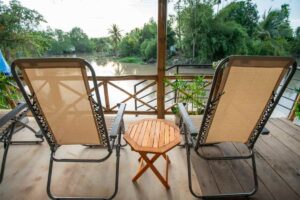Tra Su Cajuput Forest is a submerged forest or wetland area located in An Giang province, which is part of the Mekong Delta. Enjoy a visit to this forest by taking a boat trip, spotting birds and especially the tranquility of nature.
Visiting information
- Opening times: 07:00am – 7:15pm
- Entrance fee: VND 200.000pp (Entrance ticket: VND 100,000; Boat: VND 50,000; Rowing sampan: VND 50,000)
- Location: Ap Van Tra, Xuan To, Tinh Bien, An Giang
About Tra Su Cajuput Forest
In the Vietnam War, Tra Su was destroyed by the bombs of the Americans and it became an undeveloped area. After the war, the local authorities of An Giang made the plan for reforestation of cajuput and the construction of a 12 km long, 4 m wide and 4 m high levee system that will help prevent the area from being flooded during the rainy season. The forest has been designated a Special Restoration Zone since 1983, with the aim of becoming a distinguished scientific forest and nature reserve.
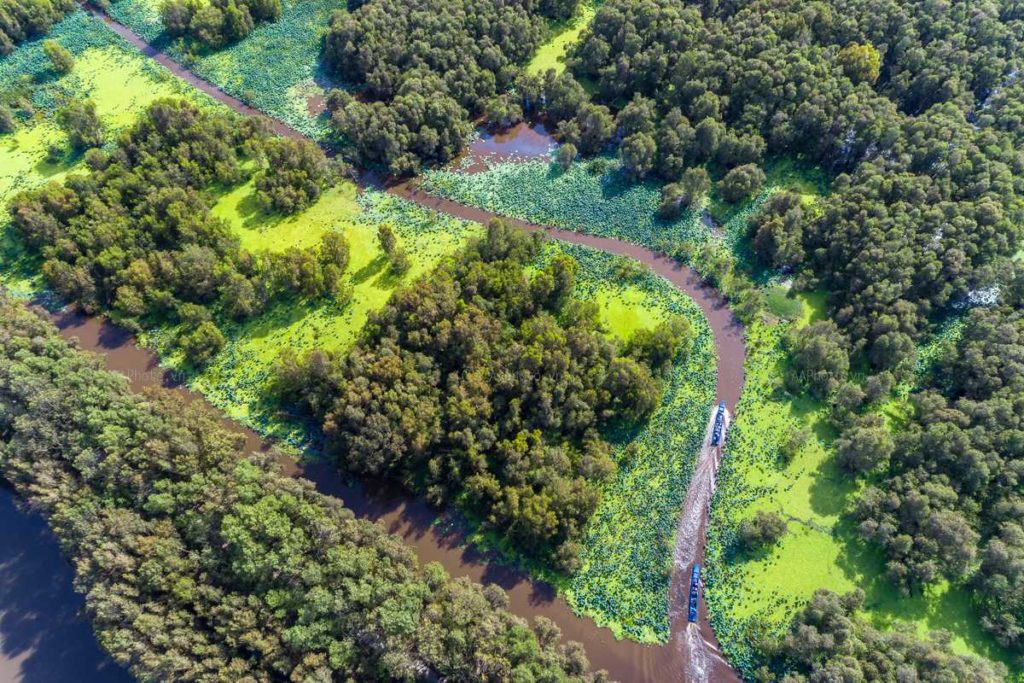
Tra Su is now a flooded forest covering nearly 850 hectares, with wetland, a carpet of emerald-green duckweed and dense cajuput forest. This unique ecosystem attracts many special flora and fauna. There are 70 different bird species, 11 mammal species, 25 reptile species and 10 fish species. In addition, no more than 150 types of plants and trees. The forest is divided into several areas to make exploring easier, including a 3000 m2 fishing area, a 3200 m2 bird sanctuary and a 2500 m2 bat sanctuary.
The forest is also called Cajuput Forest or Melaleuca forest. This name comes from the type of tree that grows a lot here, and the official name is melaleuca cajuputi, but it is better known as white samet or cajuput. It can grow to a medium to tall tree with a papery bark and is also used to make cajuput oil. They are also an important food source for mammals, insects and birds.
Highlights of Tra Su
1. Boat trip
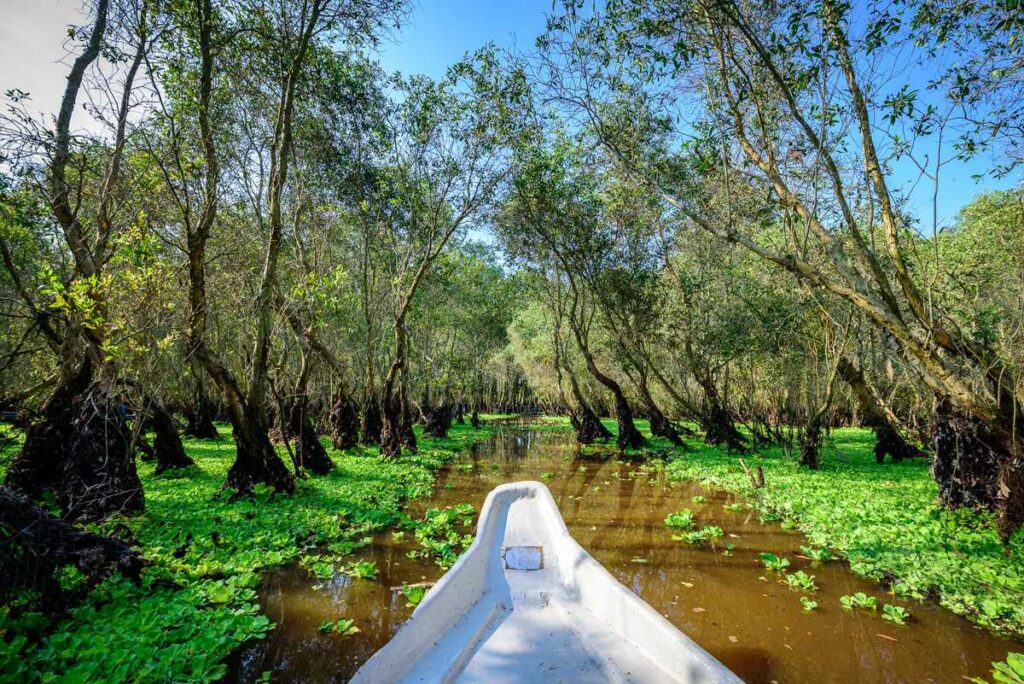
The best way to see a flooded forest is of course by boat. There is a kind of route you take, which starts with a motorized boat that takes you through the mangrove forest and the beautiful carpet of green duckweed. Along the small canals through the forest you can enjoy the lush green water lilies and lotuses on the water and probably also locals picking the flowers from the cajuput trees to sell them later.
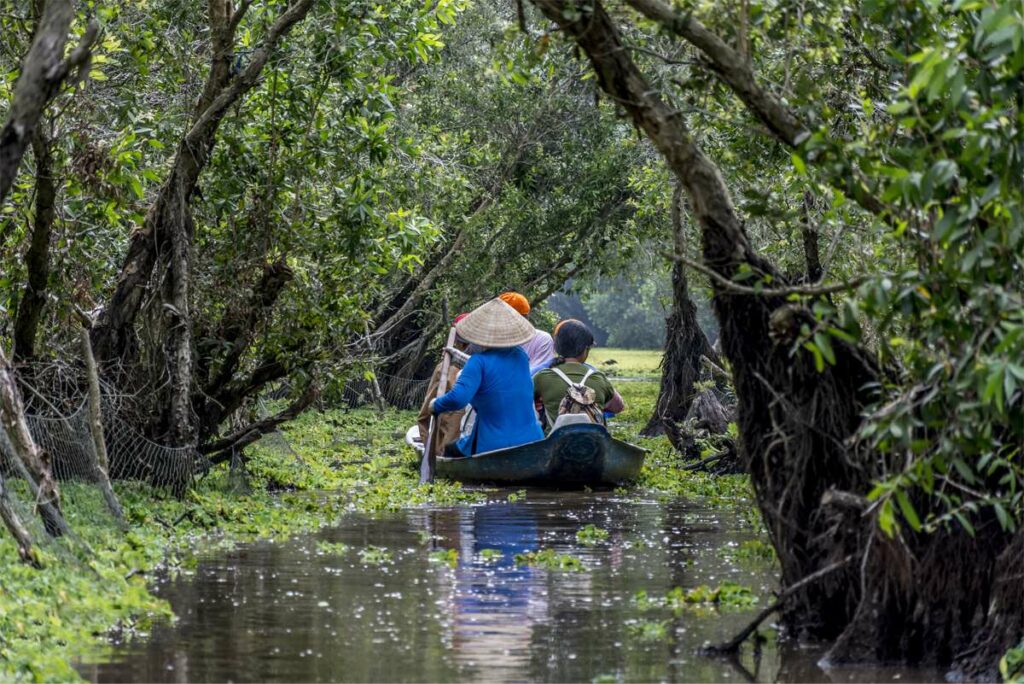
Then you transfer to a traditional sampan, a smaller rowing boat with room for up to 4 people, to get deeper into the forest. A local will gently paddle you through the narrow channels of the forest. The deeper you go into the forest, the quieter and more peaceful it becomes.
2. Bird watching
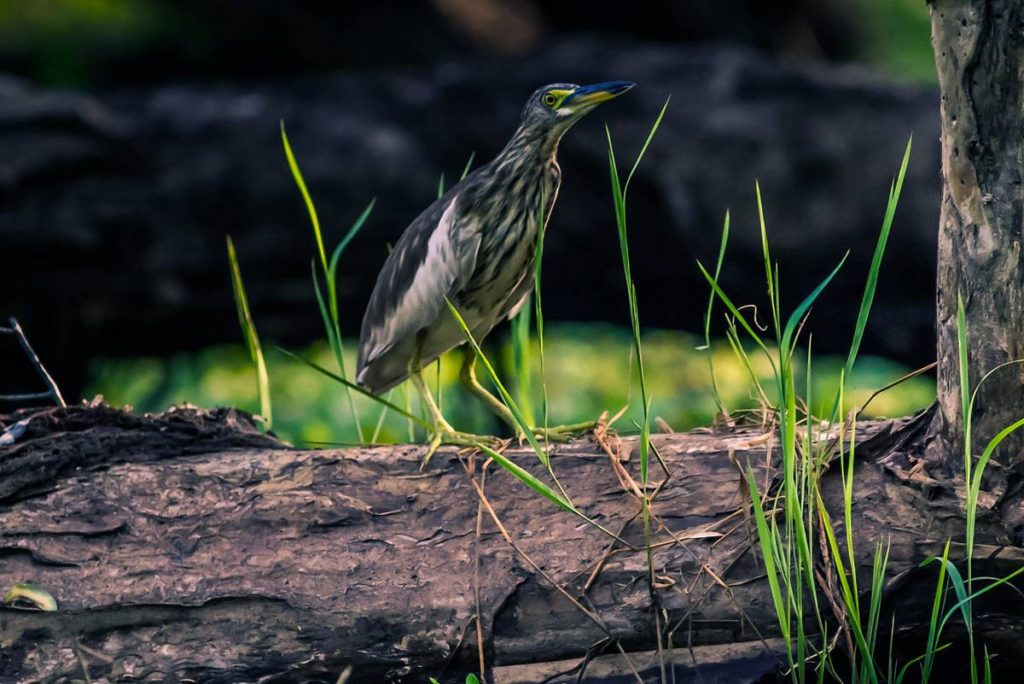
The forest is the home to 70 different bird species, including many colonies of water birds and bats. This makes Tra Su a great place for bird watching. During the boat trip you can start birding. The local paddling the boat will point you to the rare birds. You can see thousands of white storks and many colorful bird species that perch above or on the branches.
After the boat trip you can climb the 23 meter high observation tower, from where you have a beautiful panoramic view of the Tra Su forest, which is dotted with birds. It may be helpful to bring your own binoculars as the tower is a good observation point.
3. Walking through the forest
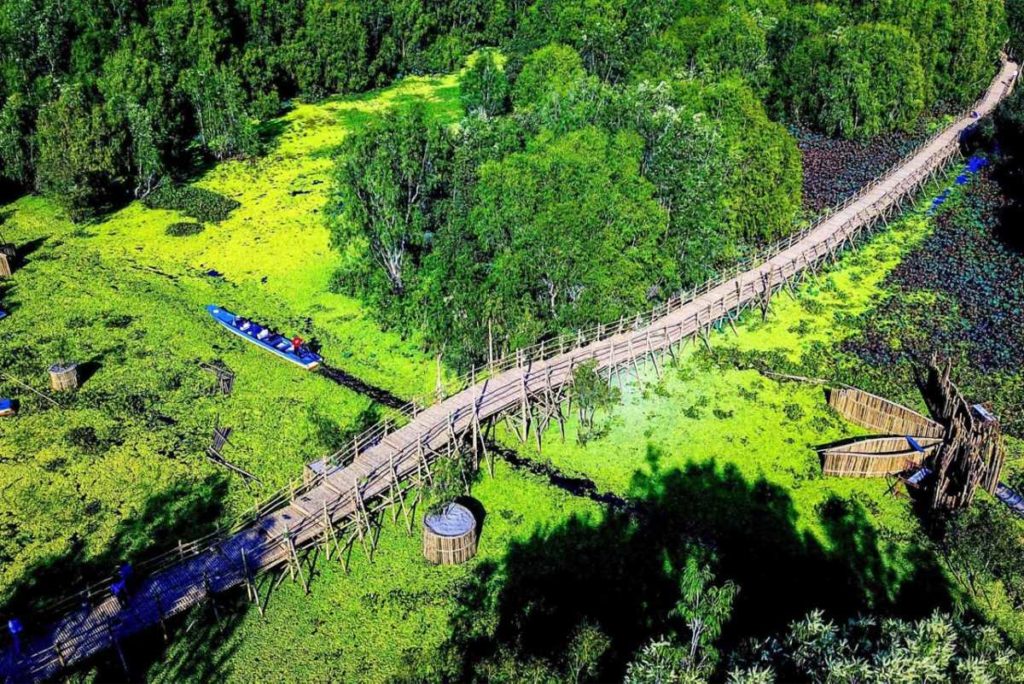
There are also a number of trails that run through the park. The highlight is the longest bamboo walkway in Vietnam. The entire one-way route is approximately 45 minutes to an hour on foot. Keep in mind that there is no other exit. From this walkway you can explore the park very well and spot many birds.
4. Explore the area around Tra Su
Tra Su is fairly remote in the Mekong Delta, so it is best to combine a visit with other sights on the route. When you drive from Chau Doc to Tra Su you will pass Sam Mountain on the way. This is a holy mountain for the locals, where you have a beautiful view over the countryside on top and there are a number of temples on the mountain that you can visit.
If you continue your way from Tra Su you will arrive at the Ta Pa rice fields, or the most beautiful rice fields in the Mekong Delta. Check out all things to do in An Giang for the full list.
How to get there?
Tra Su is approximately 25 kilometers from Chau Doc and nearly 60 kilometers from Long Xuyen. Both cities are easily accessible by bus from Can Tho and Ho Chi Minh City. From here you can rent a car with a driver or rent a motorbike yourself.
Best time to visit
Best time of the day
Early in the morning between 7am and 9am and late in the afternoon between 5pm and 7pm the birds are the most active. In the morning they fly away thousands of birds at the same time and in the late afternoon they return. It is a spectacular sight and therefore the highlight of the day to visit the forest. Another small advantage is that it is not that hot. Tip: The best place to see this is from the observation tower.
Best time of the year
The best time of the year to visit Tra Su forest is between September and November, when the water is the forest is high. During dry season, there is not enough water everywhere, which means that you can not visit every place.
Tips for visiting Tra Su
- To spot birds, it is useful not to wear too bright clothes and bring your own binoculars. And the obvious, be quiet.
- During the rainy season it is wise to bring a raincoat or other rain gear. In the dry season a hat against the sun.
- Sunscreen and insect sprays are also recommended.
- There are restaurants in the area and on the way to the forest, but it is advisable to bring some drinks and snacks. Of course, make sure that left overs do not end up in the park.

